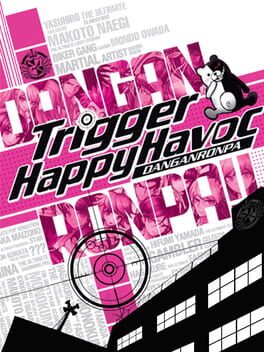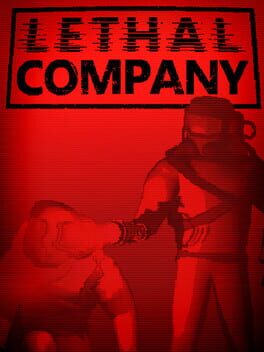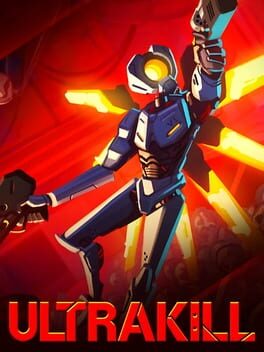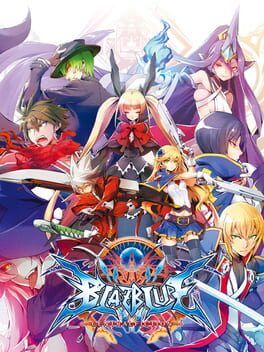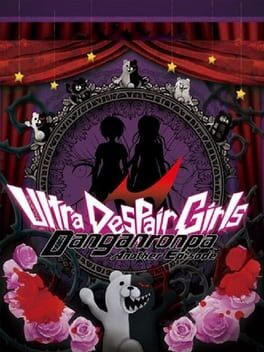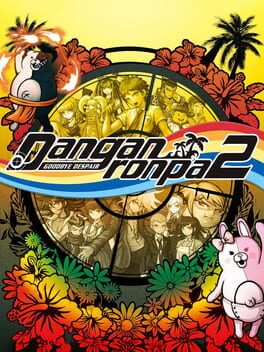laundrybasket979
9 reviews liked by laundrybasket979
Yakuza 2
2006
𝑰𝑵 𝑻𝑯𝑬 𝒀𝑨𝑲𝑼𝒁𝑨, 𝑭𝑬𝑨𝑹 𝑰𝑺 𝑵𝑶𝑻 𝑨𝑵 𝑶𝑷𝑻𝑰𝑶𝑵!
Duality lies at the heart of Yakuza 2, with the 2 in the title not just being an indicator of this being the next entry in the series. Like a virus, it infects this game on every level. Two cities, two regions, two clans, two identities, two nationalities, double agents, double-crossed, body doubles, twice as big as the first game, twice as bombastic.
AND TWO DRAGONS!
Any discussion of the PS2 Yakuza games isn’t complete without first bringing up the separate atmosphere these games exhibit which is something the series has sorely lost post Yakuza 0. The biggest fix to the atmosphere is by making the sound of each district of Kamurocho more distinct and unique, unlike the first game which insisted on reusing the same loop for almost every area resulting in walks across town feeling even more like a chore than they usually do. That’s exactly why the town of Sotenbori contrasts so beautifully with Kamurocho, being the exact opposite in a lot of ways. More varied, more compact, and in a lot of ways is a better city than Kamurocho itself. A charitable view of this difference is that it’s meant to signify how exactly the Omi Alliance separates itself from the Tojo Clan, even more than the Omi HQ itself.
The first game’s combat, while being beaten by other games released during that period, was still relatively fun but Nagoshi’s insistence on making sure Yakuza 2 lives up to that number means the combat receives a major overhaul on almost every level. It flows much more smoothly and lays a lot of the groundwork for the design philosophy of the combat system that is still followed by RGG Studio to this day. I played the game on Hard difficulty and occasionally no damaged a few bosses, allowing me to appreciate where this system excelled and where it fell short. And despite how fun it usually is there’s still the occasional boss which feels poorly designed, or like it’s meant to be played on a lower difficulty.
Although I’d be lying if I said the combat is the main draw of these games for me, going to the narrative I realize that it’s probably some of the best writing this franchise has seen. The first two Yakuza games were still written by multiple writers, after which the series mostly became Yokoyama’s playground; and this being his second game the improvement is very noticeable. He’s able to infuse the pervasive theme of duality in every element of this game, and while I can praise Yokoyama it’s still important to acknowledge that a lot of what makes Yakuza 1&2 so great is their ability to write crime dramas so well. This was most likely Hase Seishu’s doing, as he still script-doctored Yakuza 2. So it feels like a crime drama in its second season, aiming higher and being louder. It’s unknown how much Makoto Itakura, the third writer, did as after Yakuza 2 he’s mostly been relegated to the background just to show up in the “assisting directors” list of almost every Like a Dragon game released since but whatever he did I think Yakuza 2 shows why having multiple writers can work very well sometimes. Bit by bit, it’s able to effectively build up and unravel its mystery, showing just how much petty revenge can consume you. It all culminates in one of the bloodiest nights Kamurocho has ever seen, one of the best finales this franchise has to offer, and definitely the best Christmas game ever made.
On a cold winter night, they exchange fists. It's not a matter of love, it's not a matter of hate. Not even about honor. Just the desire to prove they can, before the silence that will ensue.
𝗦𝗜𝗟𝗘𝗡𝗧 𝗡𝗜𝗚𝗛𝗧, 𝗛𝗢𝗟𝗬 𝗡𝗜𝗚𝗛𝗧.
Duality lies at the heart of Yakuza 2, with the 2 in the title not just being an indicator of this being the next entry in the series. Like a virus, it infects this game on every level. Two cities, two regions, two clans, two identities, two nationalities, double agents, double-crossed, body doubles, twice as big as the first game, twice as bombastic.
AND TWO DRAGONS!
Any discussion of the PS2 Yakuza games isn’t complete without first bringing up the separate atmosphere these games exhibit which is something the series has sorely lost post Yakuza 0. The biggest fix to the atmosphere is by making the sound of each district of Kamurocho more distinct and unique, unlike the first game which insisted on reusing the same loop for almost every area resulting in walks across town feeling even more like a chore than they usually do. That’s exactly why the town of Sotenbori contrasts so beautifully with Kamurocho, being the exact opposite in a lot of ways. More varied, more compact, and in a lot of ways is a better city than Kamurocho itself. A charitable view of this difference is that it’s meant to signify how exactly the Omi Alliance separates itself from the Tojo Clan, even more than the Omi HQ itself.
The first game’s combat, while being beaten by other games released during that period, was still relatively fun but Nagoshi’s insistence on making sure Yakuza 2 lives up to that number means the combat receives a major overhaul on almost every level. It flows much more smoothly and lays a lot of the groundwork for the design philosophy of the combat system that is still followed by RGG Studio to this day. I played the game on Hard difficulty and occasionally no damaged a few bosses, allowing me to appreciate where this system excelled and where it fell short. And despite how fun it usually is there’s still the occasional boss which feels poorly designed, or like it’s meant to be played on a lower difficulty.
Although I’d be lying if I said the combat is the main draw of these games for me, going to the narrative I realize that it’s probably some of the best writing this franchise has seen. The first two Yakuza games were still written by multiple writers, after which the series mostly became Yokoyama’s playground; and this being his second game the improvement is very noticeable. He’s able to infuse the pervasive theme of duality in every element of this game, and while I can praise Yokoyama it’s still important to acknowledge that a lot of what makes Yakuza 1&2 so great is their ability to write crime dramas so well. This was most likely Hase Seishu’s doing, as he still script-doctored Yakuza 2. So it feels like a crime drama in its second season, aiming higher and being louder. It’s unknown how much Makoto Itakura, the third writer, did as after Yakuza 2 he’s mostly been relegated to the background just to show up in the “assisting directors” list of almost every Like a Dragon game released since but whatever he did I think Yakuza 2 shows why having multiple writers can work very well sometimes. Bit by bit, it’s able to effectively build up and unravel its mystery, showing just how much petty revenge can consume you. It all culminates in one of the bloodiest nights Kamurocho has ever seen, one of the best finales this franchise has to offer, and definitely the best Christmas game ever made.
On a cold winter night, they exchange fists. It's not a matter of love, it's not a matter of hate. Not even about honor. Just the desire to prove they can, before the silence that will ensue.
𝗦𝗜𝗟𝗘𝗡𝗧 𝗡𝗜𝗚𝗛𝗧, 𝗛𝗢𝗟𝗬 𝗡𝗜𝗚𝗛𝗧.
Lethal Company
2023
Ultrakill
2020
This review contains spoilers
“Nothing is as it seems…”
The concept of truth is a relatively simple one - something that is “in accordance with reality” - in other words, something as it actually is, rather than a fabrication of the truth or a lie.
This concept is explored in great depth by NieR Replicant, and takes what would be a mere lie or a mistruth and extends it to the point where the entire game hinges on this “truth”.
At various points in the game, be it in the main campaign or in side quests, the player is asked whether or not they want to reveal this “truth” to characters after being sent on a quest to find someone, only to find them dead (at least most of the time).
The revelation of “truth” is something that is intertwined with the game’s core narrative. By the time you finish your first playthrough of the game, the game reveals to you that you can play the game again, and learn more, and come closer to obtaining the “truth” that the game dangles in front of your face throughout your time with it.
Upon entering the Shadowlord’s castle, the player learns that the twins from his village have been working with the kidnapper of his sister. The twins reveal to Nier that he, and everyone he knows, are not human. The twins reveal to him that all throughout your journey, you’ve been killing the actual humans themselves.
Ending A and the route itself will leave a lot of questions in the player’s mind.
And that’s just how the game wants it.
Your curiosity will prompt you to play the game through one more time, but it comes with a twist - now, on your second playthrough, you can understand the words of the true humans, the Shades, and you cannot stop Nier from progressing, and slaughtering the souls of the humans.
The ending B route is essentially a torture device, and a brilliant one at that - I doubt any of you reading this would actually want to commit mass genocide - but how ending B is utilized to convey the “truth” of the world of NieR to the player is absolutely incredible.
It doesn’t stop there - the incomprehensible speech of the shades is not. The only thing that changes upon a repeat playthrough - but now, the game gives the player extra cutscenes revealing the human nature of these shades (more specifically the bosses you fight throughout it), twisting the knife in the stomach of the player.
This route also sheds extra light onto the backstories and gives more intrinsic details into the rest of the party. Emil’s status as an experimental weapon is elaborated upon, but Kainé’s tragic backstory and her relationship with Tyrann fully cement her as the best written character in the game.
Of course, this relationship with Tyrann is another “truth” that, unlike some more explicit ones, is one that is implicit but horrifying nonetheless to figure out. Kainé, unlike Nier, Emil and Weiss, can actually understand the Shades, and is the reason as to why the player can understand the Shades this time around. And she can’t even do anything about it, as Tyrann would simply kill her if she even stopped the massacre of the Shades.
The Black Scrawl, the disease actively hurting Nier’s sister, is caused by the death of that Replicant’s respective Gestalt. You run around, killing Shades. And what are Shades? Gestalts.
You, the player, kill the Shadowlord. Do some further digging and you will find out that the Shadowlord is Nier’s Gestalt, and that Gestalts cannot function without the Shadowlord, and they would simply relapse and die without the Shadowlord. In killing the Shadowlord, you have effectively doomed the human race, and yourself.
All of this is revealed to the player, quite simply, because they chose to venture deeper into the game and world of NieR. And it hurts. How NieR Replicant utilizes New Game Plus as a mechanic for exploring the game’s narrative is one that emphasizes the concept of “truth” and its significance in the story that Taro wants to tell.
***
In a world where around every turn there is more than meets the eye and where the truth hurts, is there truly a right option as for what to do?
Do you face the truth head on, even if it hurts?
Or do you reject it, and believe in a lie?
The lies told by Devola and Popola were told for a purpose. There is no “evil” in the world of NieR, as everything has some justification or another. The separation of the soul from the body was done as to prevent the White Chlorination Disease, and it just so happened that the Replicants gained sentience by accident. The twins are carrying out their purpose given to them by the foundation that initiated Project Gestalt, and so too is the Shadowlord. Nier isn’t the villain either, even though he committed mass genocide, he did it under the belief that the Shades were monsters.
The main conflict in the world of NieR simply happened by accident - Replicants vs. Gestalts.
The Replicants weren’t supposed to gain sentience. The twins had to lie to all of the Replicants so to maintain order.
In this, you could interpret NieR Replicant as Taro’s cruel joke - it certainly seems like it - the cast undergoes no shortage of trials and testing of their beliefs and motives.
Alas! The world of NieR is a truly beautiful one, flaws and all. As the Replicants gained sentience, their world and culture began to develop, from Seafront to Façade. The people banded together, and built villages and towns, despite the constant threat from relapsed Gestalts.
On one hand you have the people of the Aerie, a place where Gestalts inhabit Replicants and shut themselves away from the world, embodying a miserable place devoid of this culture, a place where the inhabitants lament their woes to the player in passing.
On the other, you have truly beautiful places like Façade, a place where hundreds of years of collective desire for a society of order has manifested itself into this place where people obey rules, a place where "rules do not exist to bind you, they exist so you may know your freedoms", a place improved by Nier and company’s visit to the place, upon which Rule 0 was made - you may disband a rule by vote - ultimately showing an example of the player’s ability to do good in this world, as when the player visits Façade after the five year time skip, things have changed for the better.
In this world, a world that is relentless in tormenting the characters, there is beauty to be found in the culture and the evolution of man through hundreds of years of being left to their own devices.
These moments in which the player experiences the beauty of this world, accompanied by an astounding soundtrack that is as memorable as the game itself, are emblematic of hope for mankind, a hope that mankind can do good, despite the mistakes we may have made along the way.
And that is beautiful.
